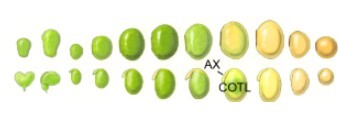
Jer-Young Lin
Assistant Research Fellow
(06)216-6863
jeryoung@gate.sinica.edu.tw
AS-BCST Room 225
Lab.
AS-BCST Room 226
Tel: (06)216-6864
Education
2009 Ph.D., Purdue Genetics Program, Purdue University
Experience
2016-present Assistant Research Fellow, Academia Sinica, Taiwan
2015-2019 Assistant Project Scientist, University of California, Los Angeles (UCLA), USA
2010-2015 Postdoctoral Research Fellow, University of California, Los Angeles (UCLA), USA
2009-2010 Postdoctoral Research Associate, Purdue University, USA
Honors
2016 Scholarship Award, Gene Regulatory Networks Course, Marine Biology Laboratory
2009 Travel Award, The Biology of Genomes, Cold Spring Harbor Laboratory
2009 Purdue Graduate Student Government Travel Award
2009 Purdue University Interdisciplinary Life Sciences Program Travel Grant
2005 Travel Award, Taipei Economic and Cultural Office

